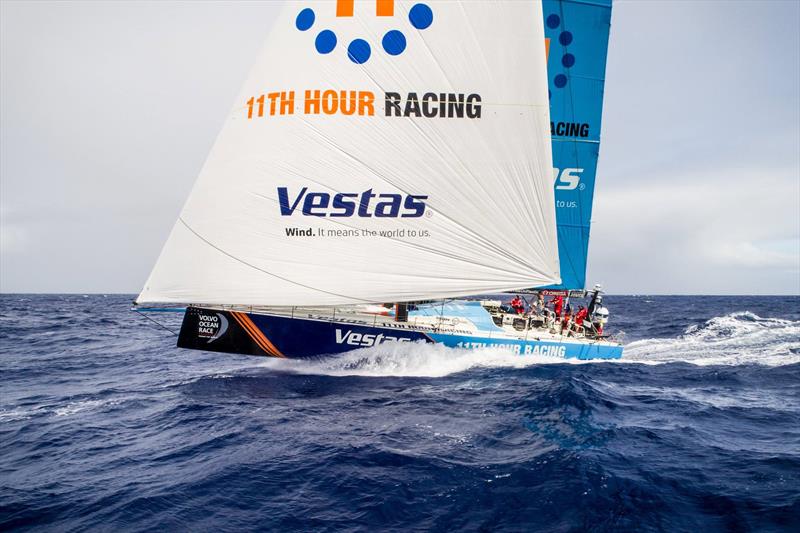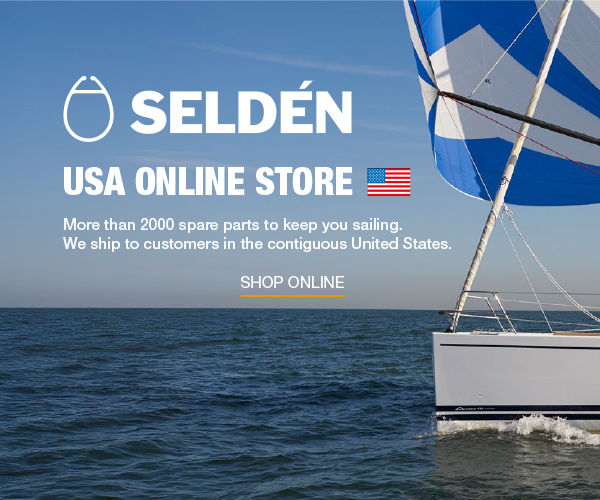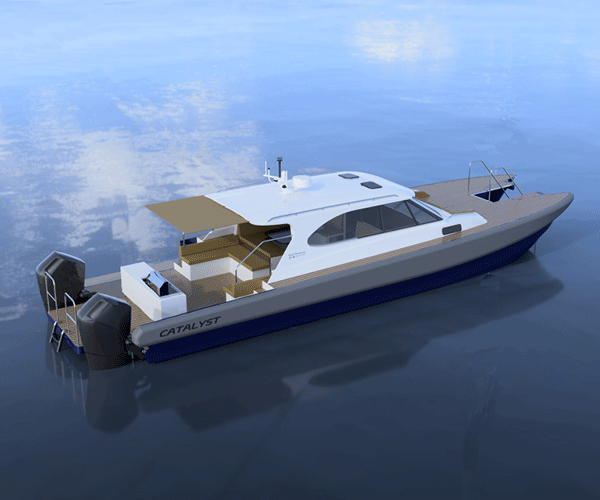
Vestas 11th Hour Racing’s tragic accident, Caribbean and Florida racing
by David Schmidt 7 Mar 2018 17:59 AEDT
6 March 2018

Vestas 11th Hour Racing - Leg 4, Volvo Ocean Race Melbourne to Hong Kong © Vestas 11th Hour Racing / Volvo Ocean race


While sailboat racing isn't a danger sport, per se, the simple fact remains that accidents do happen and people do occasionally get hurt. Still, much like hopping into our cars for the drive down the freeway to the marina or YC, most of us accept this risk while using our skills, training and years of experience to best mitigate risk and danger for ourselves and for our friends and fellow competitors. But what if the person who got hurt or killed isn't part of sailing's fraternity and didn't accept the same risk profile as sailors hopping onto a highly strung raceboat that was designed to ply the world's ocean? Such was the case on the early morning of January 20, 2018, just after 0100 hours (Hong Kong time), when Vestas 11th Hour Racing hit a fishing boat some 30 miles off of Hong Kong while sailing in roughly 20 knots of air as they were finishing Leg 4 of the Volvo Ocean Race (Melbourne, Australia to Hong Kong), knocking the fishermen into the water and tragically claiming one life.
While the sailors were unharmed, living with the real-world consequences of this reality is no easy weight to bear, especially for the team's afterguard.
Given that a human life was lost in this tragic collision, Vestas 11th Hour Racing has been tight-lipped about what transpired, both out of respect for the lost fisherman's family and so that the investigation can run its due course sans any inkling of influence or obstruction.
Last week, the team announced that they have been told by investigators that authorities in Hong Kong and China are close to wrapping up their investigations and that "no further action will be taken". As a result, Mark Towill, the team's number two who was acting as skipper on Leg 4 (due to a medical emergency in skipper Charlie Enright's family), went on the record in a Q&A with his team that was sent out as a press release to offer clarification on what transpired that dark morning.
"It was a dark and cloudy night, with a breeze of around 20 knots and a moderate sea state," said Towill in the official team interview. "As we approached the fishing vessel that we had identified on AIS, the on-deck crew confirmed visual contact – the fishing vessel was well lit – and we headed up to starboard to keep clear. I was watching AIS and communicating the range and bearing to the crew. The crew confirmed we were crossing the fishing vessel when, before the anticipated cross, there was an unexpected collision."
Here, the team first had to ensure the health and well-being of all sailors, work to stabilize water ingress aboard their own vessel, and issue a Mayday call before they could render assistance.
"It took roughly 20 minutes to get our boat under control, and then we headed back towards the location of the collision," said Towill. "Upon arrival, several people on a fishing vessel nearby were shining lights to a point on the water. Our first thought was that they could be looking for someone, so we immediately started a search and rescue. After some time searching, we eventually spotted a person in the water."
While the team was on station and assisting in the rescue operations, the scene was anything but simple and straightforward. Towill again: "Communication was difficult. The sheer volume of traffic on the radio meant it was hard to communicate to the people we needed to. Not many people on the VHF were speaking English, but we found a way to relay messages through a cable laying vessel, and they were able to send their guard boat to aid in the search and rescue."
Given that Hong Kong is one of the world's busiest ports, it's not surprising that there were a lot of lights on the water, but this certainly didn't make things easier for Towill and company, who were dealing with a massive hole in their port bow that made maneuvering difficult (the team also swung their keel to starboard and kept their sail stack on that board in order to help roll their damaged port bow clear of the brine), in addition to wending their way through a populated piece of water.
"Difficult conditions and limited maneuverability hampered our initial efforts to retrieve the casualty," continued Towill. "The guard boat from the cable layer provided assistance and every effort was made from all parties involved in the search and rescue. We were finally able to successfully recover the casualty after several attempts. When we got him aboard, our medics started CPR. We alerted Hong Kong Marine Rescue Coordination Centre that we had the casualty aboard and they confirmed air support was on its way. He was transferred to a helicopter and taken to a Hong Kong hospital where medical staff where unable to revive him."
While there's no question that none of the sailors who set off from Melbourne aboard Vestas 11th Hour Racing will ever be quite the same again, there's also no question that a human life was lost and that the lost fisherman's family will be dealing with grief and the butterfly effect of this unexpected disaster for years, if not decades.
The fact that Hong Kong and Chinese investigators are close to wrapping up their inquiry and that no further action will be taken likely comes as a relief for Towill, Enright and the Vestas 11th Hour Racing team, who are now in New Zealand preparing for Leg 7, which will take the fleet from Auckland to Itajai, Brazil. However there's no escaping the fact that the race organizers knew darn right well that the entrance to Hong Kong harbour is littered with marine traffic. Moreover, race organizers also knew that plenty of this traffic doesn't carry AIS (or even proper navigation lights, let alone radar reflectors), and they know the speeds that Volvo Ocean 65s sail at under full racing conditions.
All of this begs the question: If races like the Volvo Ocean Race are going to visit ports as choked with commercial and fishing-boat traffic as Hong Kong, wouldn't race officials be wiser to finish the boats maybe 40 miles offshore and then allow them to arrive at the dock in the same order in which they finished racing?
True, this doesn't provide the same spectator thrill as watching boats finish under full sail within sight of their cheering fans, but if this allows the race to safely visit ports that otherwise might be questionable to enter at (ballpark) 20 knots of boat speed, this seems like a worthy trade-off, especially when human life is concerned.
Fortunately, the Volvo Ocean Race has already commissioned an independent report on the dangers of racing into crowded areas at night that will be chaired by Rear Admiral Chris Oxenbould AO RAN (Rtd) and assisted by Stan Honey and Chuck Hawley. Hopefully a safe and viable solution will come from this report.
Sail-World.com offers our deepest condolences to the family of the lost fisherman, and we also extend our thoughts to Vestas 11th Hour Racing's crew and afterguard as they deal with the ghosts of Leg 4, and as they prepare to engage the mammoth Leg 7, which will take the fleet around Cape Horn.
Meanwhile, on a brighter note, this past weekend also marked the J/24 Midwinter Championship (March 2-4) and the start of the Star class racing at the 2018 Bacardi Cup Invitational Regatta (March 4-10; J/70 class racing begins later this week), as well as the start of Miami Sailing Week (March 5-11), where teams are competing in Melges 24, Flying Tigers 7.5, A-Cat and M32 classes.
Finally, racing wrapped up on Sunday at the 38th annual St. Maarten Heineken Regatta (March 1-4), and the winners were crowned in 16 classes. According to reports, Sunday offered breeze-on conditions that allowed the Race Committee to send the maxi and ocean-racing classes around the island (counterclockwise), while the other classes raced off windward-leeward courses off of Simpson Bay.
May the four winds blow you safely home,
David Schmidt, Sail-World.com North American Editor